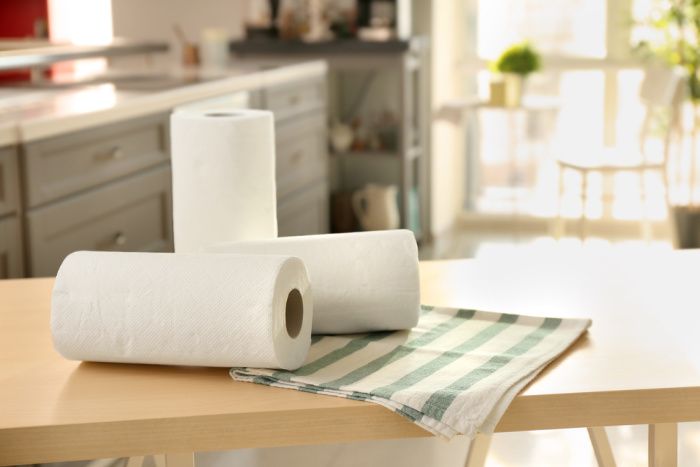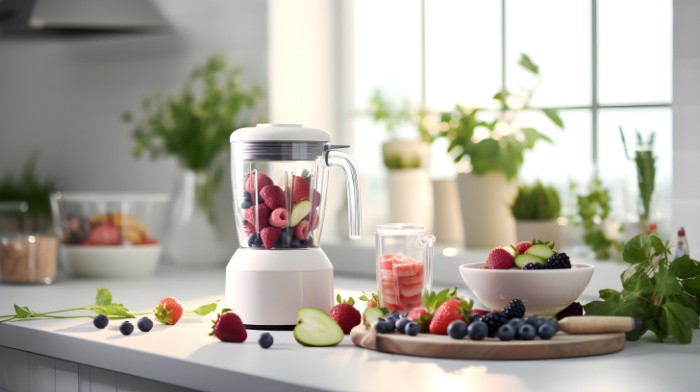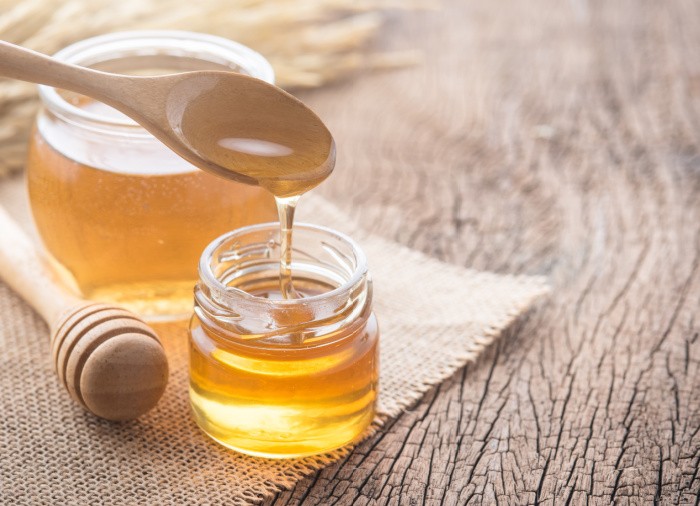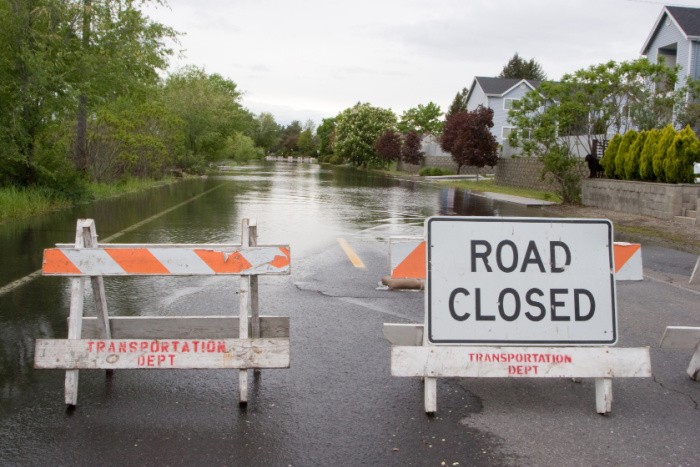A Basic Guide to Saving Money on Groceries
It’s all about saving money on groceries today! If you’re like most families, your grocery shopping experience has probably evolved over the last several years. That’s because prices keep going up, and quite frankly, we want more money left in our pockets after our grocery shopping trip is over.
Grocery stores know this and have become very competitive in how they earn your loyalty by bringing great ways of saving you money. If your grocery shopping hasn’t changed over the years, you might be missing out on some huge savings.
Take a look at our basic guide for saving money on groceries while you’re at the grocery store.
How to Save Money on Groceries
Browse Store Flyers
Today’s shoppers are not as loyal to one store as they were 20 years ago. Customers have learned to be more frugal with their money by going where the deals are.
This might mean multiple stops during your grocery trip and a little extra cherry-picking on your part. Browse the store flyers and jot down on a pad the best deals you want to take advantage of, and plan your stops accordingly.
Get Set up on Customer Loyalty Programs/Apps
Make sure that you get signed up or download the store’s app to create even more savings opportunities for you. After you scan your card you can literally watch the savings add up and see your bill go down.
Snag the Freebies
Many grocery stores promote a free item of the week just by being signed up with their loyalty programs. That’s free food! Just be sure to have your loyalty card or app on hand when you approach the checkout counter to get your free items.
Pharmacy Prescriptions
Another perk to shopping with certain local grocery stores in your area is that they have a pharmacy in their store. You can get prescription refills for a fraction of the price because of your loyalty to that grocery store.
I highly recommend looking at GoodRX because it shows you the cheapest place to buy prescriptions. I can pay cash at certain stores and the cost is lower than the co-pay through my insurance.
Bring a Calculator
Another way to stay on budget during your grocery shopping experience is by bringing a calculator. This keeps you from zero surprises when you reach the checkout area. Check out the total cost if you use the multiple item expense vs buying smaller amounts at a higher cost.
Get Groceries Based Off Your pantry
Before you head to the grocery store take a gander at the stock in your pantry. Is there anything with just an ingredient or two that can be transformed into an entire meal?
You would be surprised what you can make with the food you already have stocked away. This also helps you to not buy food that you already have in your inventory.
Stick to Meal Plans
Do you ever wonder aimlessly while grocery shopping and put miscellaneous items that look good at the time into your grocery cart? Most of us have.
Have a game plan before you even set foot in the grocery store. Write down several meal plans so you’re throwing the right items into the cart. Again, shop smart by looking at the ad flyers for the stores you’re visiting.
Avoid Impulse Items
This is a biggie! Avoid putting impulse items into your grocery cart to help save even more money on your grocery bill. This might mean leaving your husband and kids at home since they often have a tendency of throwing extra “goodies” into the cart while you’re not looking.
Steer clear of the candy bars and small bottles of refrigerated pop in the coolers by the check-out lanes.
Never Pay Full Retail
Avoid paying full retail on anything during your visit. Now I know that sometimes that isn’t possible, but you can more than likely find that same item on sale for much cheaper at another store location. Be sure and watch for my monthly “What To Stock Up On” series to save the big bucks on items you need.
Buy the Generic Store Brand
You might not believe this, but buying certain generic store brand foods are just as good as the national leading brands. No joke. Here’s a little secret for someone that worked retail for several years.
Many of the generic foods that you find in your local grocery store are actually the same foods as the leading brands, simply under a different label. Once in a while, you might pick up a generic brand food that doesn’t meet your standards, but I doubt you’ll find that is the case very often.
Don’t Fall for Eye-level Products
Have you ever noticed that most of the products on the store shelving are more expensive at eye-level? Grocery stores are smart and have strategically set up their shelves this way. Be sure to scan from top to bottom the sections you’re hunting for the best deals.
Check Unit Pricing
Checking the unit pricing can save you a bunch of money too. Most grocery stores include unit pricing on their shelf tags to help you compare which container or package is the better value.
Buy in Bulk
Buying in bulk is also another great way of saving money during your grocery visit. For instance, you might pay more for a large bag of dried beans upfront vs a small can of beans, but over time you will pay more while getting less if you rely on the smaller packages.
Freeze Meats That are Great Deals
When you see a hot deal on meat, don’t pass it up. You can take that meat and throw it in the freezer when you get home.
This way you can stock up on meat, and not have to buy it at a higher price on your next visit. Simply unthaw it when you’re ready to use it.
Look for Markdowns
Grocery stores hate throwing out perishable foods when they expire. Typically, a few days before that item will be thrown out stores mark them down to blow them out. Keep your eyes peeled.
This can lead to some huge savings on meat, dairy, bakery goods and produce. Just be sure to use them in a reasonable time so they don’t spoil.
Pay With Cash
I’m not totally sure why this works, but it’s proven that it does. Using cash will help you spend less money than putting it on a debit/credit card.
Experts have found that we find it more painful to hand cash over the counter and are more prone to spend less than if we just swipe a piece of plastic. Plus, once that cash is gone, you can’t go over your set budget.
Rain Checks
Is there a particular ad item that the grocery store is out-of-stock on currently? Be sure to pick up a raincheck to get that deal. Some retail stores even give money back if they are out of stock on certain ad items. Talk about a win-win!
Final Word
This is a basic guide to saving money on your future grocery store visits. If you’re a careful grocery shop spender, what other ways have you found to save money? If we know we are saving money on groceries every time we shop we can spread our budget a little. May God bless this world, Linda























Just an FYI to be careful with those sales tags on items on the shelves. One local market has started putting items on clearance, but the initial discount is only 10% off! It’s only after a few weeks that the discount level goes up….and 10% off is usually less savings than a weekly sale at a competing market.
But for deeply discounted items that a store is using as a loss leader to get you into the store, I not only buy the limit, I tend to go back a few times for a few batches of the limit. Check your store policy as some places may be more strict than others. But usually if you go with your spouse then both of you can buy the limit, just as separate orders. 🙂
Hi DM Walsh, thanks for the tip! We can all use the savings tips to save MONEY! I love it! Linda
I found that following a meal plan and making that meal plan based on what I have in the freezer and on the pantry shelf reduces the cost of groceries! Then, I generally only need to shop for fresh veggies, fruit and dairy. Of course, this also reduces the amount of food I have on hand so what I try to do is a monthly shopping trip and purchase only those things that I have used during the month. I keep a running list of the pantry shelf items I use during the month so I always have those on the shopping list. This helps with food rotation as well.
Something I did the other day was to go through my spices and make a “master list” to post on the cupboard door. What I found was that I have 3 of some spices and very little of others.
The cost of spices is really high in my opinion. So, I try to shop the bulk section at my local Winco when I need something that is not highly used. That way, I can purchase smaller amounts which save me money. Also I try to make sure that the menu plan does not include recipes that require “odd” spices!!
Another tip that I use when planning my shopping trip is to not only take my calculator (it is on my phone) but I also use the calculator when going through the ads. This helps with planning what and how many of a given item I am looking for.
Hi Leanne, great tips!! You are so right we must have a plan in order to save money. I wish I had a Winco where I live. I went to one with my daughter and the prices were super low. I love their bulk buying section. Great comment, Linda
Linda, as usual, great tips and reminders! One money-saver I’ve found are privately owned “discount” stores: most of their items are at or past the expiration dates but this seldom matters on canned or boxed foods (except for dry cereal, lol). A lot of their meats are frozen, so unless thawed, doesn’t make a difference. Including luncheon meats…like, the big chains receive the pkgs frozen, don’t defrost until ready to put in showcase. But they then sell the frozen meats, if close to expiration date, to discount places for very little. Last week I bought 2 lb frozen pkgs of sliced ham, turkey, chicken for $1.79/pkg. Good deal!
In a nutshell, I do/did a lot of your ideas, and they all work together to reduce grocery costs: monthly menu, shopping list, cash envelope, calculator, generic brand products, few processed/ready-to-cook meals. Here’s a tip I do when going between stores one month to next: I save and bring with me my receipts from other shopping trips: easy to compare pricing between stores, because sometimes it’s just easier to go to Just one place, gulp, until you look at prices for staples! Or in some cases, there’s a lower price for a (usually generic brand) staple where the month before, this store was higher. I do Not expect myself to remember all the prices. But, receipts help. Last month I went first to the store that is usually second in line: found soups for 50cents/can. Checked my old receipt from competitor across the street: same soups were 69/79/89 cents/can. Doesn’t seem like much savings but adds up when buying a case! So that’s my tip for the day!
Hi Wendy, that’s a big difference in the price of canned soups!! I love buying cases because they save me money. The lower the price the better. I have to tell you a funny story. My cute daughter went to a “discount store” and got 40 pounds of plantains for $4.00. She sent me a picture of the awesome buy!! She called me and said the people at the store said to cook them in the peel or boil them like potatoes. Let me say that 40 pounds were a lot of food!!! I had the giggles so bad just thinking how she was going to prepare all those plantains. She made some awesome meals! Linda